Once dismissed as old and repetitive by Progressive Artists' Group, AA Almelkar's colourful portrayals of life return for public viewing in a first-of-its kind display
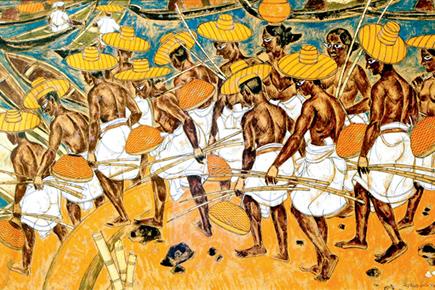
Artist AA Almelkar
![]() In every period throughout history, when change becomes the buzzword, there are traditionalists who are dismissed as old and irrelevant. Artist AA Almelkar is one such name from the post-Independence era of Indian art.
In every period throughout history, when change becomes the buzzword, there are traditionalists who are dismissed as old and irrelevant. Artist AA Almelkar is one such name from the post-Independence era of Indian art.
ADVERTISEMENT
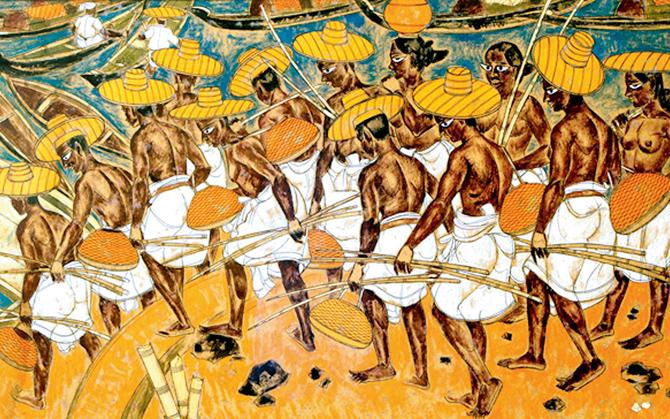
Now, in an effort to highlight the importance of his works and their impact in Indian art, the National Gallery of Modern Art, has curated an exhibition featuring works from focussed on the artist and his contemporaries, titled AA Almelkar: Inspiration and Impact. The show opens for the public on April 16 at the gallery.
Almelkar worked in an era where experimentation and realism was the ‘in’ thing, and anything to do with traditional motifs and figures were simply dismissed. But despite that dismissal, which attracted remarks like, ‘He recites the same old Raga’ from his contemporaries at the Progressive Group, Almelkar’s works earned him popularity across the nation, says Suhas Bahulkar, the curator of the show.
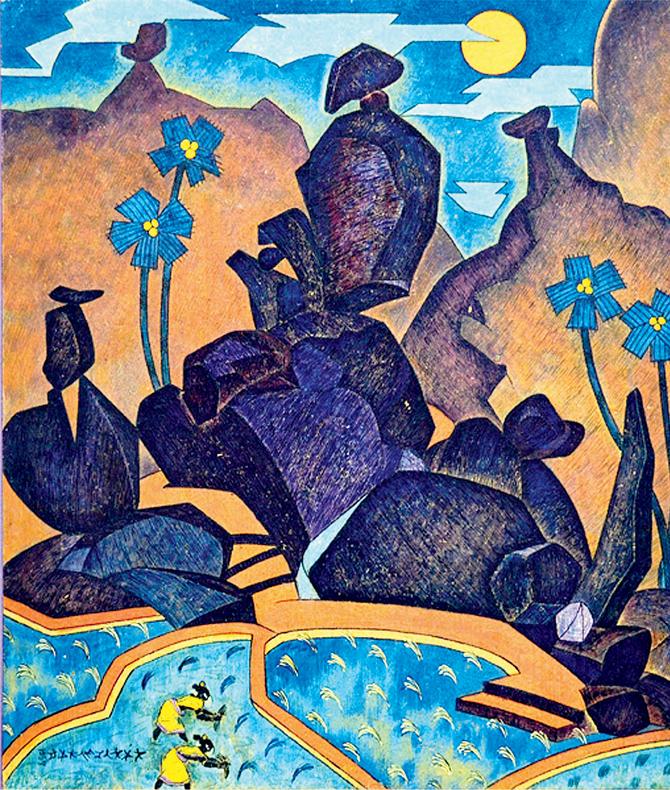
“He was extremely popular in the ’50s. But as it is in India, his works were poorly documented, and Almelkar was lost to history,” he adds.
Bahulkar, who is also the chairman of the Advisory Committee of NGMA, Mumbai, says that recently works of Almelkar have begun to re-appear in public. With this exhibition he hopes to introduce Mumbaikars to him and other traditionalists from that era. “There is a lot of art that happened outside the Progressive Group during the 1950s and in later years. With this exhibition we hope to introduce Mumbaikars to Almelkar and his contemporaries,” he adds.
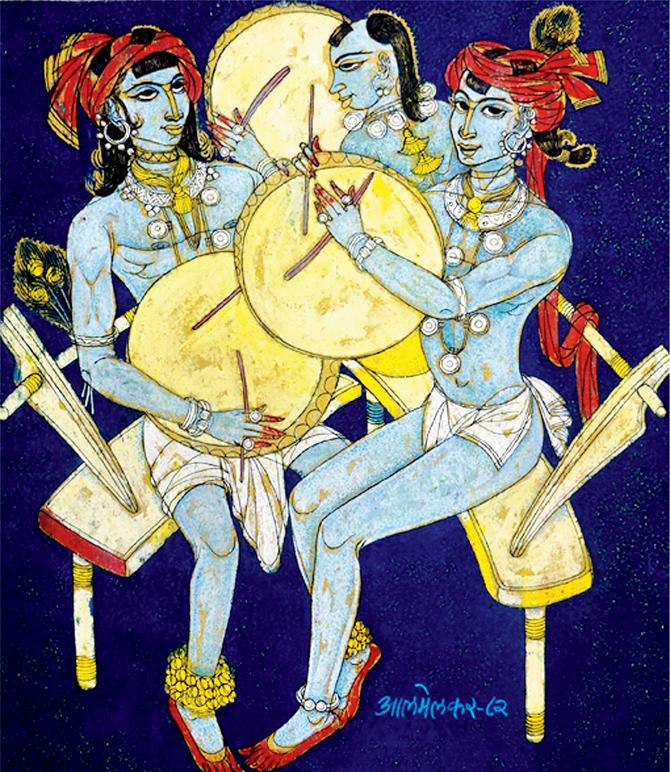
Bahulkar informs that Almelkar started with landscapes, but post 1945, he moved on to paintings based on kings and consorts, heroes and heroines and raga-raginis of Hindustani music. In his later years, he captured the primitive world of adivasis, Indian villages full of diversity and rich culture along with nature, birds and animals. One can’t help but be marvel at how he was able to find beauty in the adivasi way of life, which in reality was full of misery, poverty and exploitation. “Maybe, because Almelkar felt that, only ‘the enjoyment and happiness in life should be shared with each other’,” Bahulkar writes in a press handout.
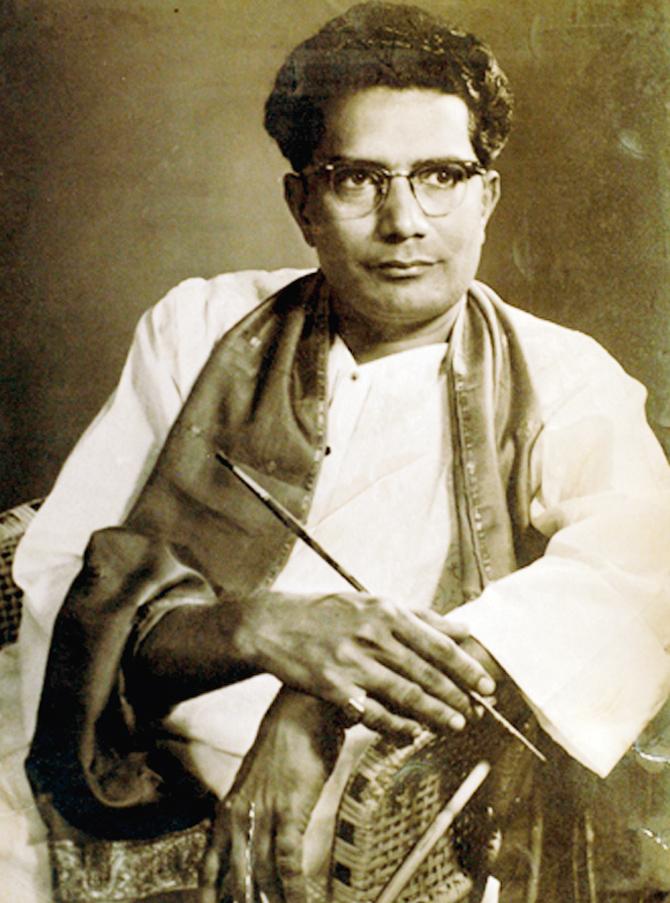 Artist AA Almelkar
Artist AA Almelkar
To achieve a beautiful treatment to even grim subjects, Almelkar used luminous and decorative colours. The artist also preferred a khaki mountboard to canvas and would often use fingers to apply colours. “The hallmark, often, was texture created by jute, comb and rags,” adds Bahulkar. These parameters were termed as the Almelkar style.
Throughout his career, Almelkar travelled a lot, challenging himself, his skills and the canvas, leading forward a lonely crusade against realism and the radical experimentation of the modernists in the post-Independence era. He didn’t just master the traditional style, he reinvented it and presented it in a way that took the Progressive Artists head on. On one side, there were the likes of Souza, Hussain and Raza, and on the other side, Almelkar and other traditionalists. However, Bahulkar adds here that despite being on two sides of the art canvas, there was no animosity between them. Also on display will be some rare photographs featuring Almelkar and his contemporaries.
From: April 16 to June 30, 11 am to 6 pm (Mondays closed)
At: NGMA, Sir Cowasji Jahangir Public Hall, near Regal Cinema, MG Road, Fort.
Call: 22881966
 Subscribe today by clicking the link and stay updated with the latest news!" Click here!
Subscribe today by clicking the link and stay updated with the latest news!" Click here!






